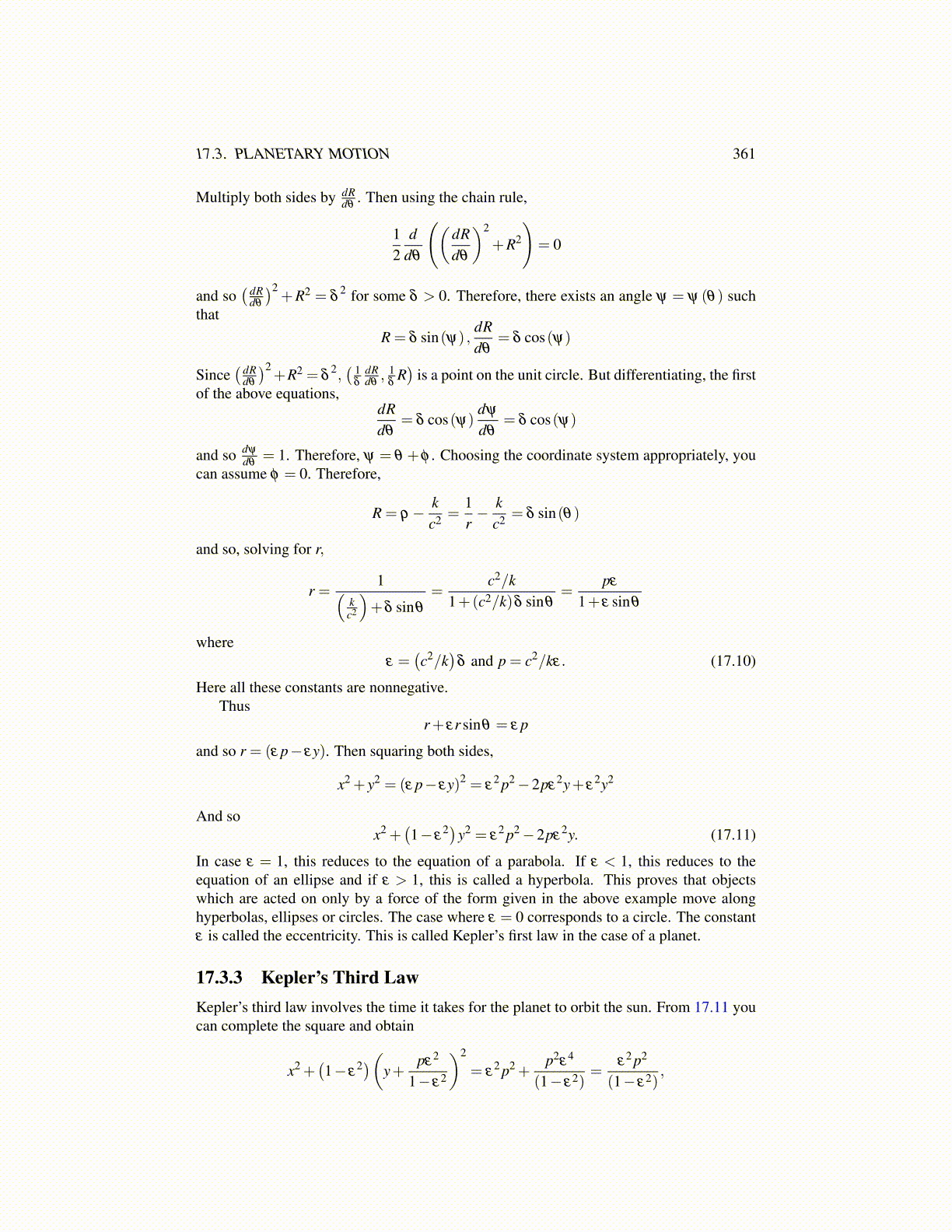
17.4. THE ANGULAR VELOCITY VECTOR 361
Lemma 17.4.1 The following hold. Whenever r (t) ,s(t) are two vectors from the setof vectors {i(t) ,j (t) ,k (t)} ,
r (t) ·s′ (t) =−r′ (t) ·s(t)
In particular, the case where r = s, implies r′ (t) ·r (t) = 0.
Proof: By assumption, r (t) · s(t) is either 0 for all t or 1 in case r = s. Therefore,from the product rule,
r (t) ·s′ (t)+r′ (t) ·s(t) = 0
which yields the desired result.Then the fundamental result is the following major theorem which gives the existence
and uniqueness of the angular velocity vector.
Theorem 17.4.2 Let (i(t) ,j (t) ,k (t)) be a right handed orthogonal system of unitvectors as explained above. Then there exists a unique vector Ω(t) , the angular velocityvector, such that for r (t) any of the {i(t) ,j (t) ,k (t)} ,
r′ (t) =Ω(t)×r (t)
Proof: First I will show that if this angular velocity vector Ω(t) exists, then it mustbe of a certain form. This will prove uniqueness. After showing this, I will verify that itdoes what it needs to do by simply checking that it does so. In all considerations, recallthat in the box product, the × and · can be switched. I will use this fact with no commentin what follows. So suppose that such an angular velocity vector exists. Then i′ (t) =Ω(t)× i(t) with a similar formula holding for the other vectors. Also note that since thisis a right handed system, i(t)×j (t) = k (t) ,j (t)×k (t) = i(t) , and k (t)× i(t) = j (t) asearlier. In addition, if you want the component of a vector v with respect to some r (t), itis v ·r (t) = vr (t). Thus
v = vii(t)+ v jj (t)+ vkk (t) , vr = v ·r (t) for each r (t) ∈ {i(t) ,j (t) ,k (t)}
Then
i′ (t) ·j (t) =Ω(t)× i(t) ·j (t) =Ω(t) · i(t)×j (t) =Ω(t) ·k (t) = Ω(t)k
Thus the component of Ω(t) in the direction k (t) is determined. Next,
i′ (t) ·k (t) =Ω(t)× i(t) ·k (t) =Ω(t) · i(t)×k (t) =−Ω j (t)
and so the component in the direction j (t) is also determined. Next,
j ′ (t) ·k (t) =Ω(t)×j (t) ·k (t) =Ω(t) · (j (t)×k (t)) = Ωi (t)
so the component of Ω(t) in direction i(t) is determined. Thus, if there is such an angularvelocity vector, it must be of the form
Ω(t)≡(j ′ (t) ·k (t)
)i(t)−
(i′ (t) ·k (t)
)j (t)+
(i′ (t) ·j (t)
)k (t)